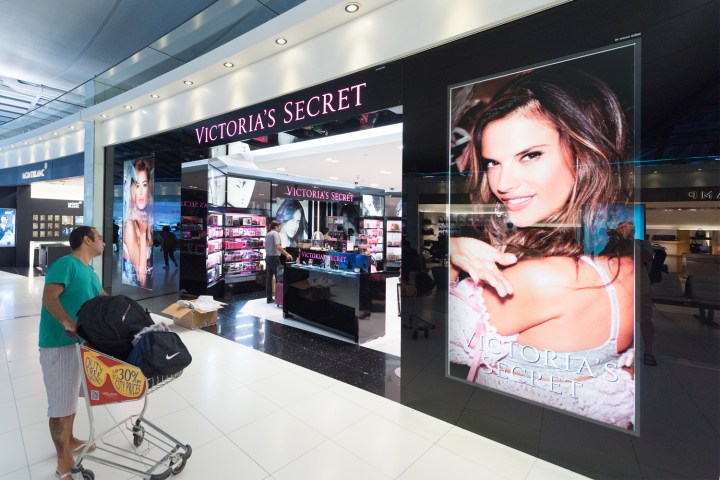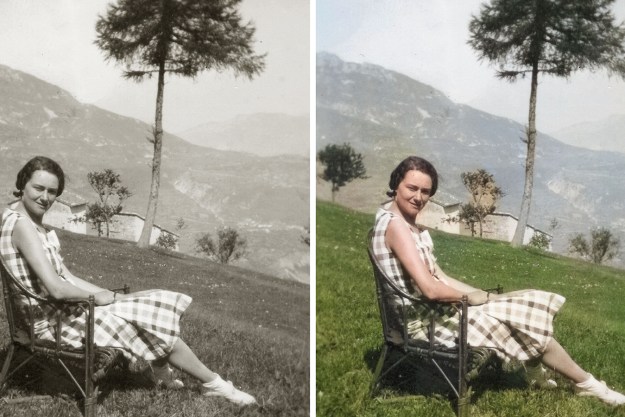
While the retoucher (referred to as “Sarah”) still works in the industry, extreme retouching is a reason why she’s working as a part-time freelancer instead of a full time Photoshopper — she now turns down waist tucks and edits made to child models, among other standards. While some things are about creating a true image — like adjusting an image to show well in print or altering a color that didn’t capture well on camera — much of it has “spiraled out of control.”
Altering body image starts well before the retouching stage, before the image is even shot. In swimsuit shoots, she says the models will wear a push-up bra underneath, which is edited out later. “When you’re wearing a strapless bikini, in no way, shape or form [can] you have cleavage. It’s physically impossible with the way gravity works.” The suits also have shaping and padding sewn right in.
During retouching, the bra is removed, and in many cases, the breasts are made rounder, higher, and larger – “They all have As,” she said. And while many people assume that models are Photoshopped to be even skinner, Sarah said that she’s also often asked to add to the backside and hide ribcages. “Models are thinner than you actually think they are, and we retouch them to make them look rounder.” Sarah said that the models have “all the normal stuff” including stubbly armpits.
So why not use a curvier model in the first place? That’s where most misunderstand who’s driving companies to edit their images so severely in the first place – the curvy models don’t sell, Sarah said. While she was working at Victoria’s Secret, they tried using different body types from curvy to well-toned – and it’s the consumers that didn’t respond to them. “As a society, we’re the ones who choose this,” she told Refinery 29. The issue persists across multiple industries, not just big names like Victoria’s Secret, and even Instagram accounts.
Companies like Aerie have started pushing back with a Photoshop-free policy, but Sarah said it’s the consumers that will drive any changes. After all, Aerie stuck with their policy after it started driving up sales. The problem is that a photo with armpit stubble and other flaws looks weird to consumers who have become accustomed to retouched images, and doesn’t successfully market a product. “I ordered a Victoria’s Secret swimsuit this summer. And then I got it and, of course, it wasn’t as cute as in the photo. I’m the one retouching this stuff and I’m still not immune to marketing. It’s incredible,” she said.
Editors' Recommendations
- Everything you can do in Photoshop for iPad, and what is still missing
- What is Photoshop Camera? How Adobe’s new A.I. app edits photos before you take them
- How to change the color of an object in Photoshop in three simple steps
- Is the iPad Pro ready for real photo editing? I ditched my MacBook to find out
- Photoshop for iPad gets one-tap selections, takes baby step toward desktop power




